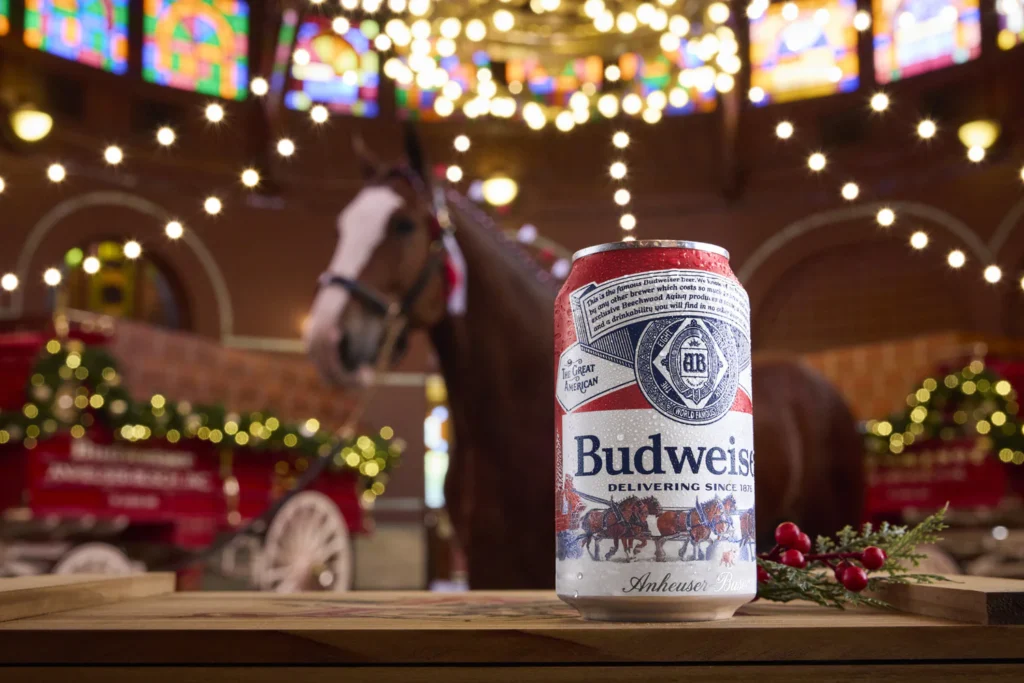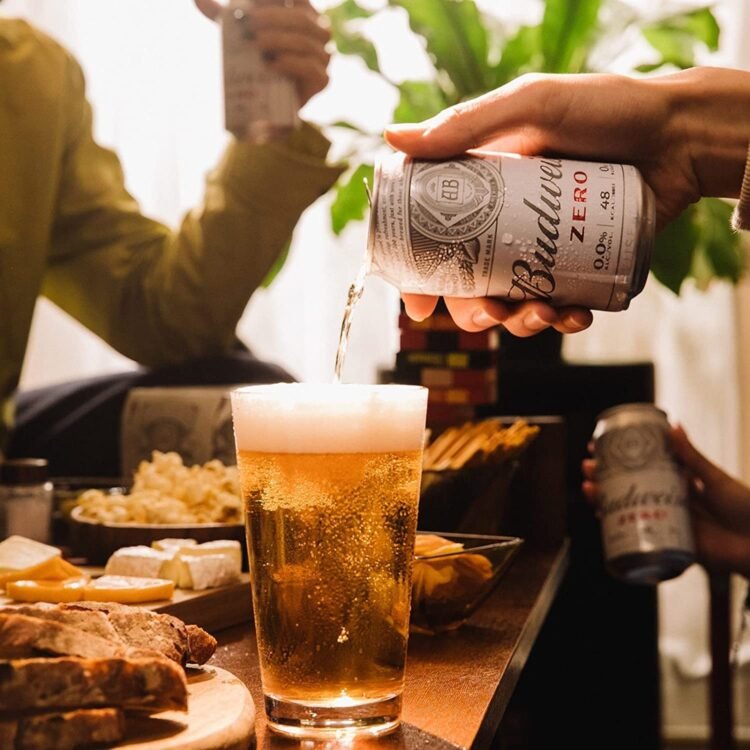Introduction
For more than a century, Budweiser has been an iconic beer brand known as “The King of Beers.” Its dominance in the American market, and increasingly around the world, is a testament to its widespread appeal. But what is it about Budweiser that keeps its loyal customers coming back for more, even in a market crowded with craft beers, boutique breweries, and other premium lagers? Why do millions of consumers choose Budweiser as their go-to beer, and how do beer drinkers from different regions perceive the brand? This article will explore Budweiser’s user base, analyzing consumer reviews, examining its target demographic, and investigating what makes the beer a top choice for many.
Through this deep dive into user experiences, we will explore the reasons behind the brand’s global success and its continued relevance in the beer industry. By looking at both positive and negative reviews, we’ll uncover the factors that influence Budweiser’s positioning in a competitive market and how it maintains its position as a leader in the beer world.
Who Are the Users of Budweiser?
Budweiser’s consumer base is as diverse as the beer itself. Historically, the brand has catered to mass-market drinkers, with a focus on making a product that appeals to a wide variety of consumers. Over time, however, Budweiser has worked to redefine its consumer identity, adapting to changing tastes and shifting cultural landscapes while maintaining its signature quality and reliability.
1. The Core American Consumer
Budweiser’s primary market has always been the United States, where the beer is considered a staple at barbecues, tailgates, sports events, and parties. Its advertising campaigns have long targeted the American middle class, positioning the beer as the quintessential American lager. This focus on the everyday consumer remains at the heart of Budweiser’s brand image. For many Americans, Budweiser is not just a beer—it’s part of the culture, tied to moments of celebration, camaraderie, and tradition. From Fourth of July celebrations to Super Bowl parties, Budweiser’s presence is nearly synonymous with American pride.
While the beer may have started with a broad consumer base, the brand has expanded its appeal by leveraging diverse marketing strategies that resonate with a variety of demographics. In particular, the brand has aligned itself with various lifestyle segments, from college students to sports enthusiasts, positioning itself as the drink of choice for people looking for an approachable and consistent beer.
2. Millennials and Younger Audiences
While Budweiser has historically been associated with older generations, it has increasingly targeted younger drinkers in recent years. In particular, Millennials and Generation Z consumers have shown increasing interest in beer choices that offer new experiences, both in flavor and branding. Budweiser has responded by modernizing its image and introducing new products such as Bud Light Lime, Budweiser Reserve, and Budweiser Select, catering to tastes that appeal to a younger audience.
The company has also adapted its advertising strategies to align with younger, more socially aware consumers, integrating messages of sustainability, local sourcing, and corporate responsibility. Budweiser’s sponsorship of major sporting events like the Super Bowl and its partnerships with musicians, celebrities, and pop culture icons have helped solidify its place in the hearts and minds of younger beer drinkers who want a familiar but relevant brand.
3. International Consumers
As Budweiser has expanded into international markets, it has made strategic efforts to cater to local tastes and preferences. While the beer’s American roots remain central to its branding, Budweiser has modified some of its approaches depending on the country or region. In markets such as Europe and Asia, the beer is marketed as a symbol of American quality and tradition, which resonates with consumers looking for an “authentic” American experience. Meanwhile, in countries like China, Budweiser has embraced localization by adapting its branding and product lines to appeal to the local beer palate, offering lighter, less bitter variations that appeal to Chinese beer drinkers.
Overall, Budweiser’s broad appeal across global markets speaks to its ability to position itself as a universal beer that transcends borders. From Beijing to Berlin, consumers recognize Budweiser’s iconic red label and trust in its consistent flavor profile.

What Do Consumers Think? A Look at Reviews
When it comes to beer, no brand can escape scrutiny, and Budweiser is no exception. Over the years, reviews of Budweiser have varied widely, with some praising it for its smooth drinkability and others criticizing it for being too basic in comparison to more experimental or niche craft beers. To gain a full understanding of how consumers view the beer, we will break down the general sentiment surrounding Budweiser in the context of flavor, quality, and overall experience.
1. The Positive Side: Reliable, Consistent, and Familiar
One of the recurring themes in positive reviews of Budweiser is its consistency. Drinkers who prefer Budweiser appreciate its reliable taste and quality. Whether they are drinking it from a can, bottle, or on tap, they know what to expect: a smooth lager with a slightly malty sweetness and crisp finish. Many consumers see Budweiser as a “go-to” beer—reliable and predictable, which is exactly what some drinkers are looking for in a beverage.
- Familiarity and Comfort: “Budweiser is my go-to beer when I want something simple and refreshing. It doesn’t matter where I am or what I’m doing—Budweiser is always the beer I can count on.”
- Flavor: “I like how clean it tastes, with just the right amount of malt. It’s not too bitter, and it’s easy to drink for hours.”
- Occasions: “Budweiser is great for any occasion, especially barbecues and game day. It just feels like an American tradition.”
For many consumers, Budweiser is more than just a beer; it’s an emotional connection to home, family, and tradition. Its mass-market appeal allows it to be a fixture in a variety of social situations, from casual get-togethers to large public events. These aspects are often reflected in online reviews, where Budweiser is appreciated for its unpretentious nature and the comfort it provides to longtime drinkers.
2. The Critical Side: Lacking Flavor Complexity
On the other hand, some consumers have a more critical take on Budweiser, often focusing on its simplicity and lack of complexity when compared to craft beer options. Some beer aficionados argue that Budweiser’s flavor is too mild and doesn’t offer the same range of taste profiles that craft beers can provide. These criticisms typically come from consumers who have developed a more refined palate or who are looking for more unique beer experiences.
- Too Plain: “It’s fine for a cheap, easy beer, but if I want something with more character, I go for a local craft beer. Budweiser tastes a little too basic for my liking.”
- Lack of Depth: “I find Budweiser to be bland. There’s no distinct flavor profile, just an average lager with nothing exciting happening.”
For this group, the desire for stronger, more distinctive flavors and ingredients has led them away from mass-produced beers like Budweiser in favor of small-batch brews and craft beers. The emergence of microbreweries and local beer producers has pushed brands like Budweiser to reevaluate their strategies, though Budweiser remains one of the top-selling beers globally.
3. The Average Consumer Experience
Overall, most reviews of Budweiser fall somewhere between these two extremes—those who appreciate its consistency and those who view it as too simplistic. The general consensus is that Budweiser provides a dependable and enjoyable beer-drinking experience, but it might not be the best choice for those who are looking for something bold or adventurous.
- Ease of Drinking: “Budweiser is easy to drink and goes well with almost any food. It’s not too heavy, and it doesn’t overwhelm your taste buds.”
- Value: “For the price, it’s hard to beat. If I want something that won’t break the bank but still gets the job done, Budweiser is a solid choice.”
Budweiser’s strong point is its versatility. It pairs well with a wide variety of foods and is widely accessible in most markets around the world. For many, this makes it the perfect “everyday” beer.
What Makes Budweiser Stand Out in the Beer Market?
Despite the growth of craft beer, Budweiser has managed to maintain its position as one of the top beer brands in the world. It is clear that Budweiser’s appeal lies in its broad accessibility, its ability to adapt to different markets, and its focus on delivering a consistent product that many drinkers trust. Reviews show that while some beer enthusiasts may seek more complex flavors, for the average consumer, Budweiser remains a symbol of reliability, tradition, and familiarity.
Moreover, Budweiser’s continuous efforts to evolve its marketing strategies, including the use of social media, sponsorships, and high-profile ad campaigns, keep it relevant in an ever-changing market. The connection Budweiser has with consumers is more than just about the flavor—it’s about the experience and the feeling that comes with cracking open a cold “King of Beers” at the end of a long day, at a gathering with friends, or at a favorite sporting event.
Conclusion
Budweiser’s ability to adapt while staying true to its core values of consistency, reliability, and tradition has made it a beloved brand for millions of consumers worldwide. While it may not always satisfy those in search of more adventurous flavors, it continues to thrive as a symbol of American pride and a staple in the beer world. From the casual drinker to the die-hard fan, Budweiser’s extensive user base and the range of positive reviews highlight the brand’s undeniable place in beer history.































